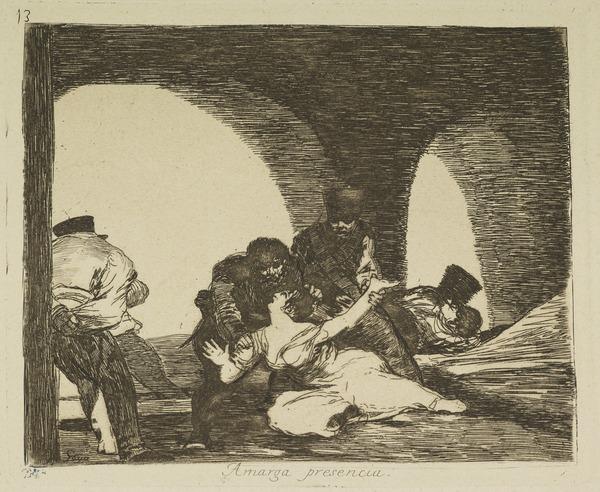Where there's a will there's a way (Donde hay ganas hay maña), Plate 13 of Los disparates
About this artwork
The ability to fly is one of man’s oldest fantasies. The search for a viable aircraft had been underway for centuries, but by the late 18th century, the quest had really started to gather momentum. In this dreamlike image Goya depicted humans in flight, made possible by a series of pulleys that connect the legs and arms to huge bat-like wings. These fantastic devices are reminiscent of the flying machines designed by Leonardo da Vinci. Goya may have been showing this dream to be impossible and lunatic or, conversely, he may have been expressing a belief in the power of rational, intelligent man for solving problems and overcoming obstacles.
Updated before 2020
-
artist:Francisco de Goya (1746 - 1828) Spanish
-
title:Where there's a will there's a way (Donde hay ganas hay maña), Plate 13 of Los disparates
-
date created:Etched about 1815–1824; published 1864
-
materials:Etching, aquatint and drypoint on paper
-
measurements:Plate mark: 24.50 x 35.00 cm
-
object type:
-
credit line:Purchased 1959
-
accession number:P 2435.14
-
gallery:
-
subject:
Francisco de Goya
Francisco de Goya
Goya, born in Fuendetodos, Zaragoza, Spain, was an original and enigmatic artist, equally gifted as a painter and printmaker. His appointment in 1786 as painter to the Spanish King Charles IV followed a period in Madrid where he had moved from the north east of Spain. Goya's reputation was built on...






